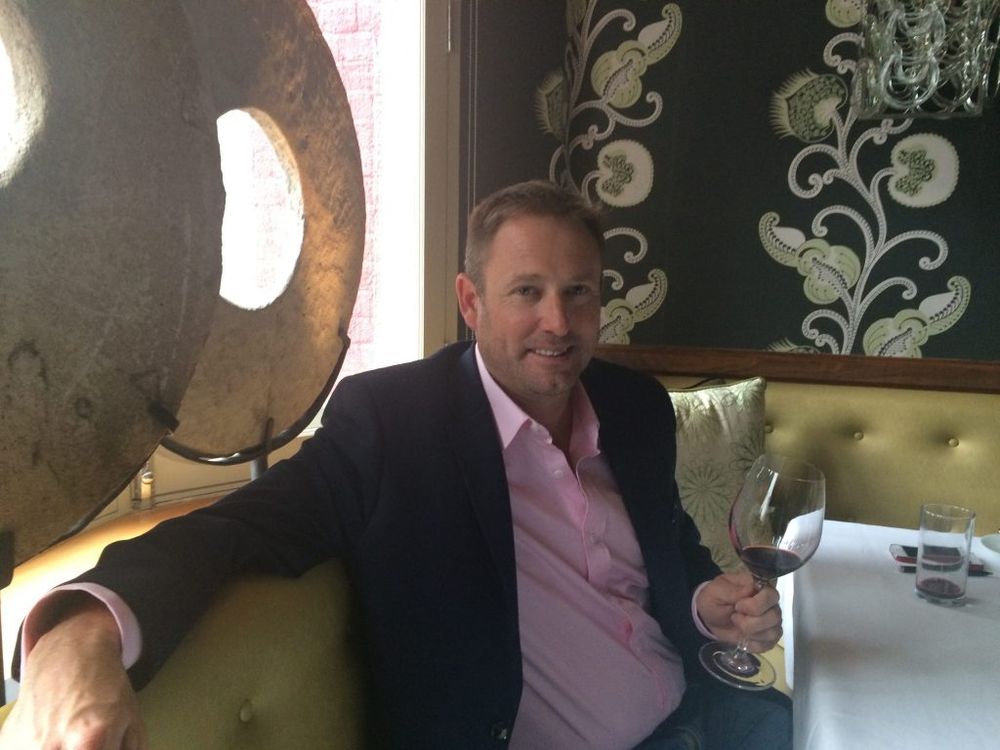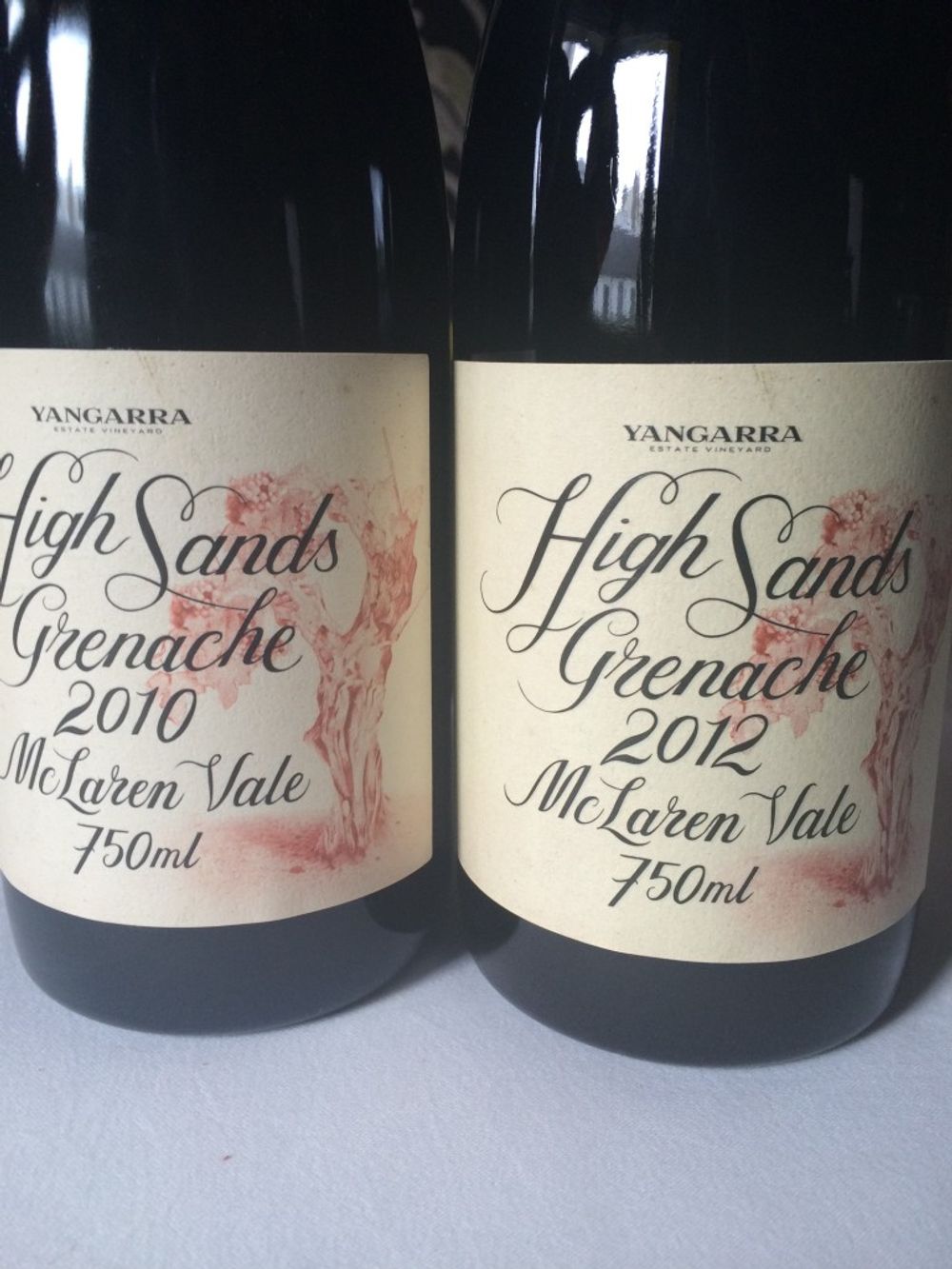“When you get a double or triple A restaurant with a sommelier on the ground you can bet anything that they want to pour Grenache.” So says Peter Fraser with a contented grin, looking more like a catalogue model than a man who has farmed under the antipodean sun for the past two decades.
He deserves to look proud, having just been crowned Australian Winemaker of the Year, the latest in a long line of accolades that have marked him as a man to watch and his wines ones to pour.
“Some producers are saying that Grenache is a hard sell but we said from the start that we want to be the go-to for this variety and this is paying off. We recently had 46 MWs to the estate as part of a 7-day Australian tour, so we were picked out as one of the top 30 wineries in Australia. We did a 2002-to-today vertical tasting of Grenache and if I do say so myself we do really great Grenache.”

Peter Fraser tasting Grenache at St James’s Club
The transformation of Yangarra
Yangarra is a smallish estate by Australian standards – 250 acres of vines, spread across 420 acres of mixed terrain such as creeks and natural vegetation. Situated in an area of McLaren Vale where it is cooler than Barossa, particularly at night-time, the wines here have a brightness and structure to them and are made with the mid-palette in mind rather than the much sweeter fruit-driven wines characteristic of the area.
The estate is producing 180,000 bottles a year although through recent expansion it will soon have double that capacity. In the last five years alone Peter has planted 10 hectares of Grenache. By comparison the largest estate in the area produces 400,000 bottles a year.
Peter runs the estate on a European model where the wines are 100% estate grown with 40 blocks on the estate.
Yangarra is owned by Jackson Family Wines who brought Peter Fraser in as winemaker and manager after a career that has taken in various estates in France, Spain, the US and Australia where previously he has made wines for St Hallett in the Barossa Valley and Normans Wines Clarendon.
At Normans, Peter won the 2002 Winestate Wine of the Year for his 1998 Chais Clarendon Shiraz, a year later he was one of the finalists for the Australian Wine Society Young Winemaker of the Year. In 2005 and 2006 (under Peter’s direction) Yangarra won International Winery of the Year from Wine & Spirits and last year he was named Australian Winemaker of the Year.
Like all awards and points systems worldwide the effect has been immediate.
“The effect of the award is huge. It’s an amazing pinnacle of my career, recognition by the industry particularly in Australia and being recognised for innovation. But from a sales perspective, everything has gone. Three months after the award was announced we have sold literally everything.”
A belief in innovative winemaking
Peter credits Jackson Family Wine for allowing him to experiment and innovate in the winery. He is a great believer in allowing wine to take its natural course, from rigorous estate management – knowing intimately the age of the vines, the soil composition, the vagaries of different plots – and then using natural yeasts and a variety of labour intensive and traditional processes such as pre-soaks, open-top fermentations, punch downs and barrel fermentations.
“We have taken them on a bit of a learning curve – there is no point trying to recreate California in Australia. The real downfalls in Australian winemaking are the PLC companies who have a chief winemaker interested only in making a generic style.”
Although 50% of the estate is Shiraz, Peter is picking it earlier, using whole bunch, 100% new French oak and natural yeast.
“Australian winemaking used to be about being rich and powerful and how much American oak and fruit you could use, we used to use ridiculous amounts of fruit, but the savoury qualities and the uniqueness of the soil tended to get overshadowed. Today we are bottling it younger and fresher, looking for textural, less reductive winemaking.”
In 2008 the estate stopped using fertiliser and four years later they got full biodynamic accreditation. Peter is experimenting with 18 different grape varieties, small-pot shiraz, ceramic egg Grenache, reserve Roussane and leaving his wines on the lees. His ‘secret’ wine (they all have one) is a natural petaillant rosé made from a blend of Grenache, Carignan, Graciano and Tinto that is just for personal consumption.
The bid to make iconic premium wines
As for Yangarra’s commercially available wines, there is an Estate Range comprising single varietals of Roussanne, Viognier, Shiraz, Grenache, and Mourverdre and a Rhone-style blend called GSM. The premium range, Icon, comprises Ironheart Shiraz and High Sands Grenache.
Ironheart Shiraz is made from 12 individual plots with high levels of reddish ironstone in the soil that lend rust-like aromas and flavours to the wine and give them their tannic profile.

High Sands Grenache hails from the 210 metres high sandy dunes called The Beach that form the backbone of the estate. The bush vines were planted by soldiers returning from World War II in 1946 after having been given land grants by the government.
As in the Rhone, Grenache favors the many advantages of the bush vine – it keeps the grapes close to the ground, ideal in a hot climate, gives them all-round dappled sun and encourages maximum aeration. The alluvial and wind-blown sands give the vines enough stress to produce intense, taut fruit.
“Expert opinion would have Grenache being sweet on the palette but I want it to have savoury-ness, characteristic of the soil.”
Peter says that he approaches these unique vines as though they were Pinot Noir.
“With Pinot Noir you would expect to get 20-30 hectolitres per acre with the Grenache vines in High Sands we get 15 hectolitres, so it is very concentrated.”
“Everything is done by hand which makes it much more expensive. But that becomes really important with a premium luxury product – provenance and a story.”


































